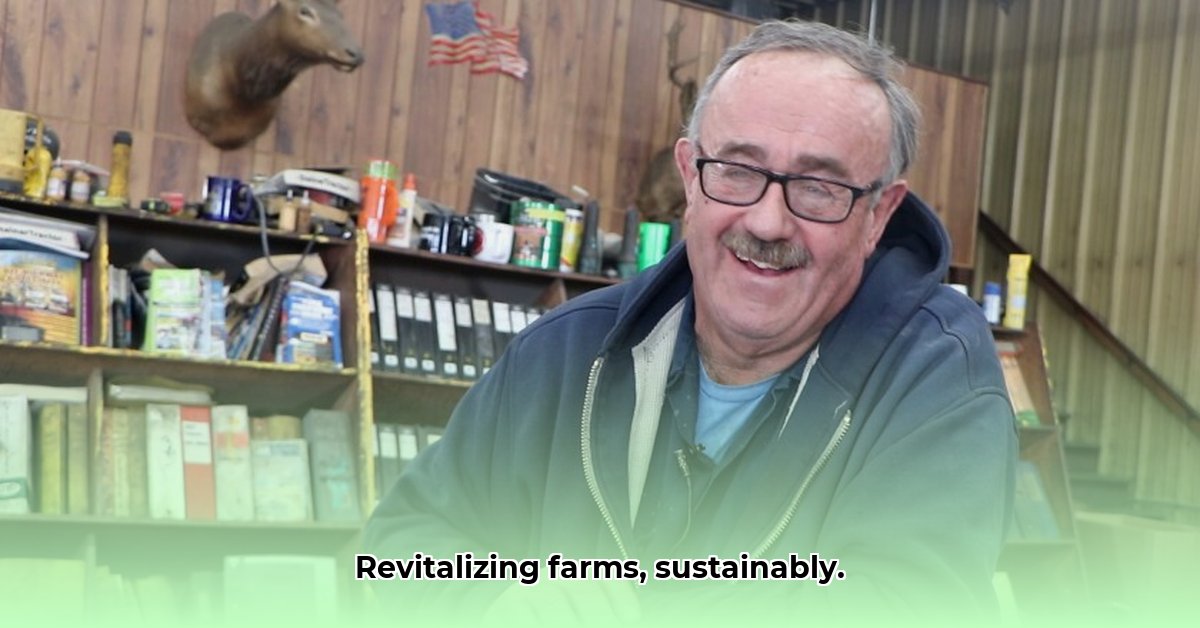
Extending the Life of Farm Equipment: A Greener Approach
Farming's environmental impact is a growing concern. Producing new farm equipment is resource-intensive, consuming significant energy and materials, and generating substantial greenhouse gas emissions. Meyers Tractor Salvage and similar businesses offer a compelling solution: the used equipment market. By extending the lifespan of existing machinery, we drastically reduce this environmental burden. This represents a significant opportunity for sustainable agriculture. But how substantial is the environmental benefit? Further research comparing the total lifecycle emissions of new versus refurbished equipment is needed to quantify these gains accurately. A study that contrasts the emissions from manufacturing a new tractor with those from completely refurbishing a used one from Meyers Tractor Salvage would provide crucial data. For water storage solutions, consider exploring water tank options.
The Challenges and Opportunities of Sourcing Sustainable Parts
One key challenge in the used equipment market is sourcing parts for older machinery. While Meyers Tractor Salvage and similar companies offer a wide selection, parts for older or less common models can be scarce. This highlights the need for collaboration across the agricultural industry. Manufacturers could design more durable, repairable tractors, prolonging their lifespan and increasing the value of used parts. Dealers can play a vital role by connecting farmers with diverse parts sources, including salvage yards like Meyers Tractor Salvage. This collaborative approach is essential for a truly circular economy.
Making Used Equipment Work for You: A Farmer's Guide
Farmers can directly benefit from embracing sustainable equipment practices. Here's a practical three-step approach:
Prioritize Preventative Maintenance: Regular maintenance dramatically extends equipment lifespan, preventing minor issues from escalating into costly repairs. This proactive approach translates to cost savings and reduced environmental impact.
Build Relationships with Reputable Parts Suppliers: Farmers should develop strong relationships with local salvage yards and parts suppliers. This ensures a reliable source of affordable parts, reducing reliance on new parts and supporting a circular economy.
Strategically Evaluate Repair vs. Replacement: Careful cost-benefit analyses for each repair decision are crucial. Often, repairing a component is significantly more cost-effective and environmentally friendly than complete replacement. This minimizes waste and reduces the demand for new parts.
Collaboration for a Greener Tomorrow: A Multi-Stakeholder Approach
The full potential of the used equipment market can only be realised through collaborative efforts:
Dealers (like Meyers Tractor Salvage): Implementing improved inventory management systems, collecting data on environmental benefits (e.g., reduced emissions), and partnering with local recycling centers for responsible waste disposal are key opportunities for growth and demonstrating commitment to sustainability.
Manufacturers: Designing tractors for longer lifespans and easier repair is crucial. This will reduce the environmental impact of production, increase demand for refurbishment and salvage parts, and benefit businesses like Meyers Tractor Salvage. Offering warranties on refurbished equipment would further incentivize sustainable practices.
Policymakers: Government incentives, such as tax breaks or subsidies for used equipment purchases, would significantly encourage adoption of sustainable practices. Investment in research and development of improved repair and refurbishment technologies would further accelerate this transition. Strong regulations governing agricultural waste disposal would also support a circular economy.
How to Reduce Environmental Impact Using Refurbished Farm Equipment
Refurbished farm equipment significantly reduces the environmental footprint of farming. Purchasing used machinery lowers demand for new production, thereby minimizing resource consumption and emissions. Extending the lifespan of existing equipment conserves valuable resources and dramatically reduces waste. Every successfully repaired and reused component contributes to a smaller carbon footprint.
Practical Steps for Sustainable Equipment Management
These steps are crucial to successfully reducing the environmental impact through the use of refurbished equipment:
Thorough Pre-Purchase Inspection: Before buying, conduct a comprehensive inspection, ideally with a qualified mechanic, to assess the condition of all key components.
Prioritize Proactive Maintenance: Regular servicing and prompt attention to maintenance needs are crucial for extending equipment lifespan. A well-maintained tractor contributes to a more productive and sustainable operation.
Build a Strong Repair Network: Develop relationships with skilled mechanics specializing in agricultural equipment repair, ensuring access to timely repairs and quality parts. A strong network of repair resources is key to extending equipment life.
Source Sustainable Parts: Whenever possible, opt for sustainable and ethically sourced parts, such as those from salvage yards. This supports a circular economy and reduces the environmental impact of part production.
Addressing the Challenges and Embracing the "Reduce, Reuse, Recycle" (RRR) Philosophy
While challenges remain – such as finding reliable used equipment or sourcing parts for older models – these are surmountable through careful planning and proactive partnerships. The shift towards refurbished farm equipment aligns perfectly with the "Reduce, Reuse, Recycle" (RRR) principles. When combined with other sustainable practices like precision irrigation and efficient fertilizer application, it creates a much greener agricultural operation.
The used farm equipment market, exemplified by businesses like Meyers Tractor Salvage, presents a powerful pathway towards sustainable agriculture. However, realizing its full potential requires collaboration across the agricultural value chain. Farmers, dealers, manufacturers, and policymakers must work together to overcome challenges and harness the vast opportunities for a greener future.